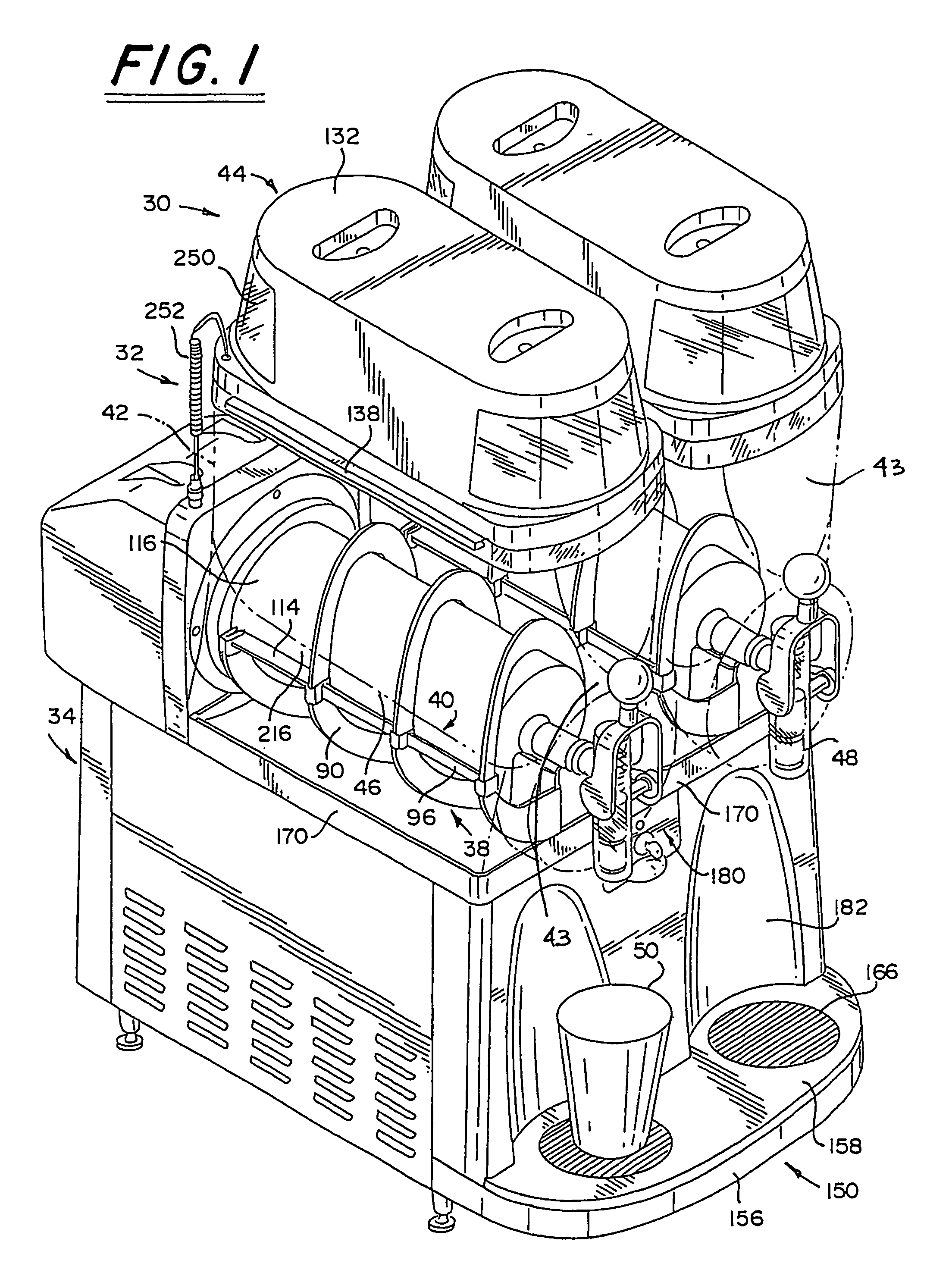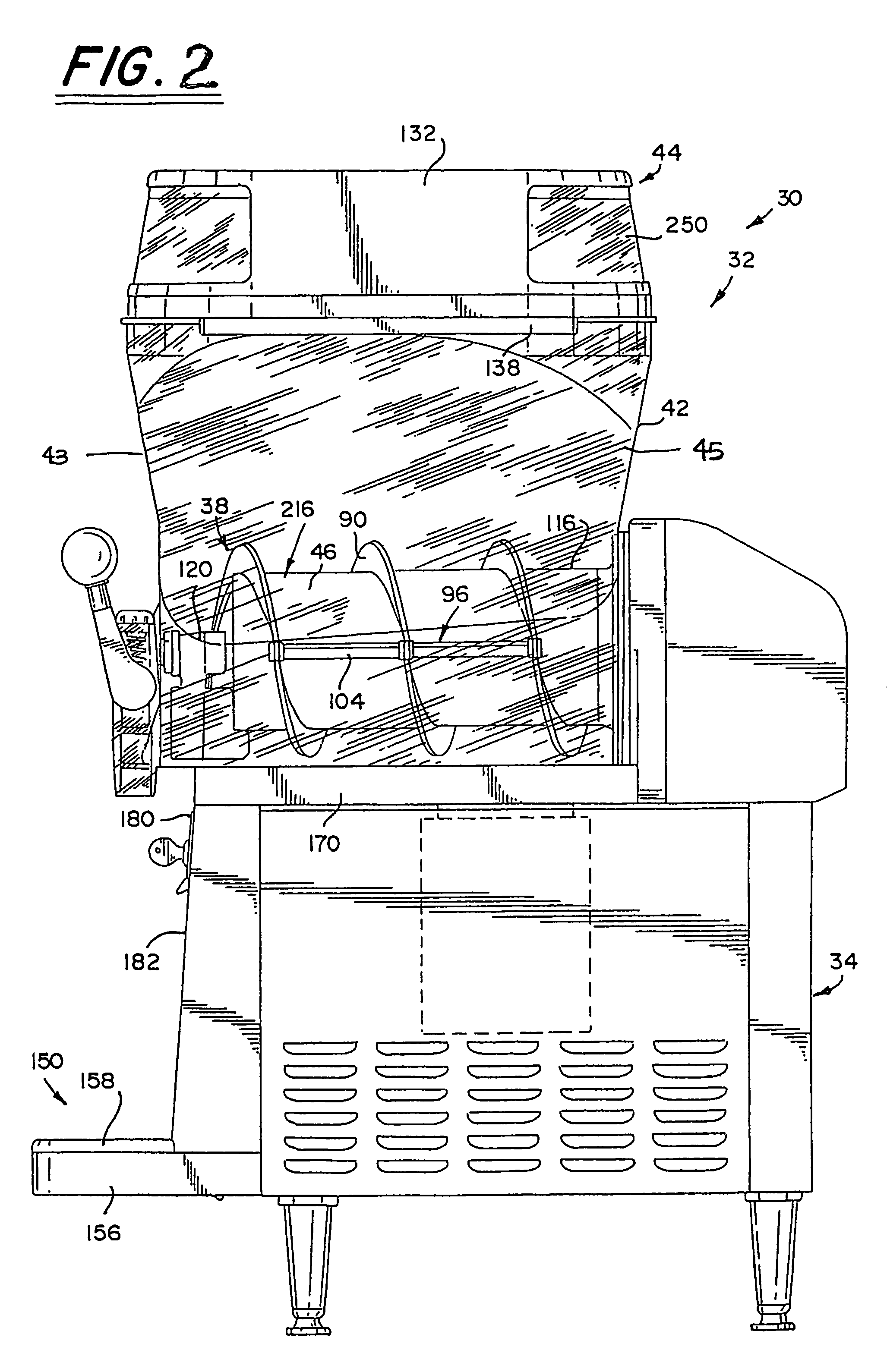Reversing auger system
a technology of reverse auger and hopper, which is applied in the direction of lighting and heating equipment, applications, instruments, etc., can solve the problems of reducing slowing down the time period required for the system to complete, and the temperature of the beverage mixture can be reduced, so as to improve the chilled beverage production apparatus and reduce the temperature of the beverage mixture
- Summary
- Abstract
- Description
- Claims
- Application Information
AI Technical Summary
Benefits of technology
Problems solved by technology
Method used
Image
Examples
Embodiment Construction
[0019]While the present disclosure may be susceptible to embodiment in different forms, there is shown in the drawings, and herein will be described in detail, an embodiment with the understanding that the present description is to be considered an exemplification of the principles of the invention and is not intended to limit the invention to that as illustrated and described herein.
[0020]With reference to the figures, a chilled or slush beverage apparatus 30 is shown in perspective in FIG. 1. The beverage apparatus 30 includes at least one hopper assembly 32 which is retained on a housing 34. As will be described in greater detail hereinbelow, the housing 34 includes a drive motor 36 (see FIG. 5) and a coolant system 200 (see FIG. 6). The drive motor 36 as mentioned above drives a rotatable mixing member which in the preferred embodiment shown in FIG. 1-5 is an auger assembly 38. Auger assembly 38 is positioned proximate to a chiller assembly 40, both being retained within a corre...
PUM
 Login to View More
Login to View More Abstract
Description
Claims
Application Information
 Login to View More
Login to View More - R&D
- Intellectual Property
- Life Sciences
- Materials
- Tech Scout
- Unparalleled Data Quality
- Higher Quality Content
- 60% Fewer Hallucinations
Browse by: Latest US Patents, China's latest patents, Technical Efficacy Thesaurus, Application Domain, Technology Topic, Popular Technical Reports.
© 2025 PatSnap. All rights reserved.Legal|Privacy policy|Modern Slavery Act Transparency Statement|Sitemap|About US| Contact US: help@patsnap.com



